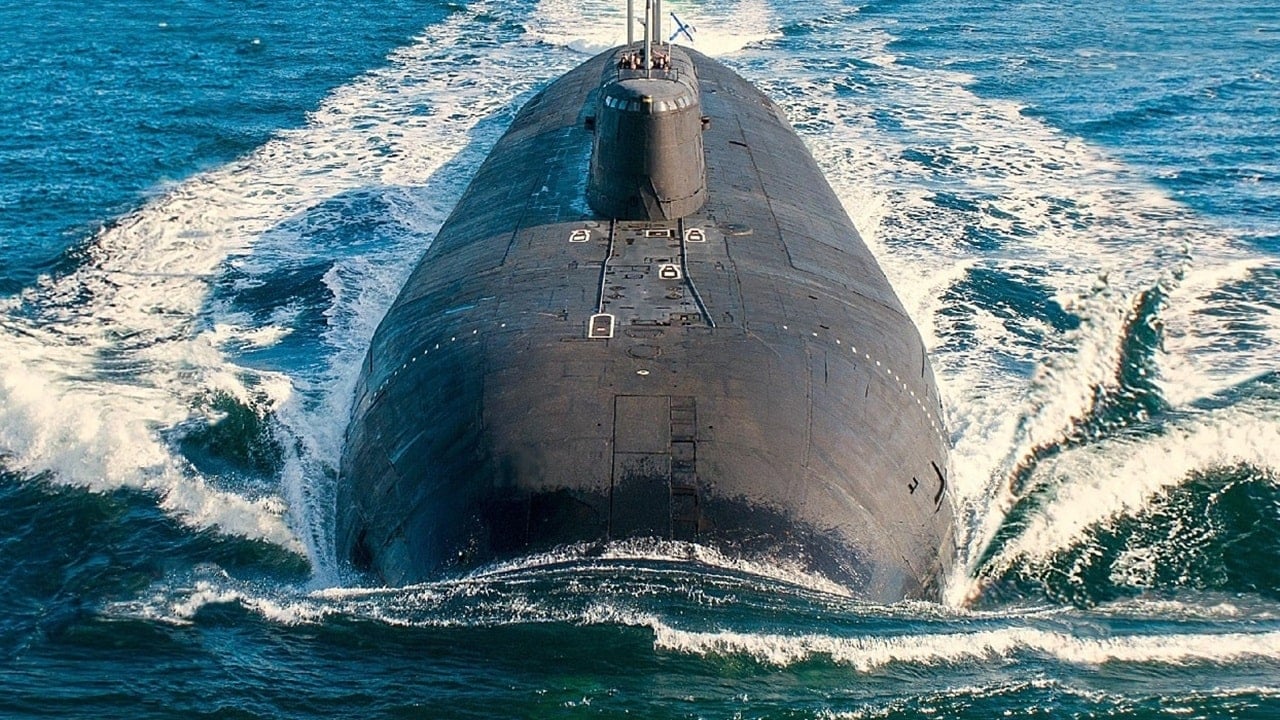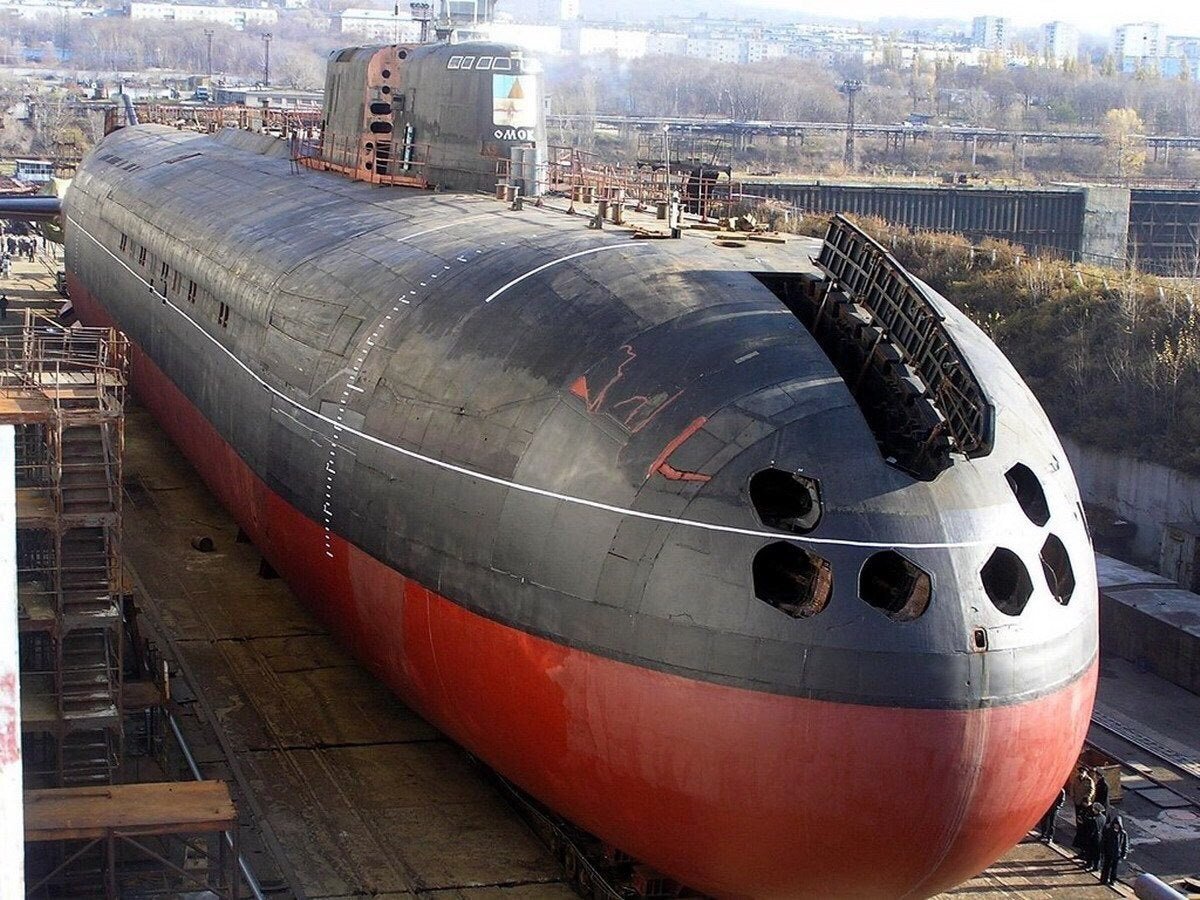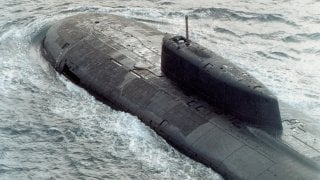A 'Welding Mishap' Caused a Russian Nuclear Attack Submarine To Catch Fire
Russia's Oscar II-class submarines, designed during the Cold War to counter NATO threats, symbolize the strength of the Soviet-era naval power. However, the fire aboard the K-150 Tomsk in 2013, during maintenance at Zvezda Shipyard, highlighted significant deficiencies in Russian naval maintenance practices.
What You Need to Know: Russia's Oscar II-class submarines, designed during the Cold War to counter NATO threats, symbolize the strength of the Soviet-era naval power. However, the fire aboard the K-150 Tomsk in 2013, during maintenance at Zvezda Shipyard, highlighted significant deficiencies in Russian naval maintenance practices.

-The fire, caused by a welding mishap in a sensitive area, raised concerns about safety standards and the overall state of the Russian submarine fleet.
-Although Russia has sought to modernize its navy, the ongoing war in Ukraine has stalled efforts, leaving questions about whether Russia can maintain its submarine fleet’s competitiveness and safety.
Fire on Russian Submarine Tomsk Exposes Dangerous Flaws in Maintenance Practices
Russia is a submarine superpower. Even after the fall of the Soviet Union and the end of the Cold War, which Russia lost, the Russian Navy possessed multiple capabilities that made it a very dangerous fighting force.
One class of nuclear-powered submarines, in particular, was the Oscar II-class. But the sordid tale of how one of these submarines, K-150 Tomsk, caught fire while undergoing maintenance at the Zvezda Shipyard, shows how badly the Russians struggled after the Soviet Union fell apart.
Oscar-II-class submarines were designed during the Cold War to counter the perceived NATO threat to Soviet maritime operations. These submarines carried an impressive array of weapons into battle.
Notably, they had the SS-N-19 “Shipwreck” cruise missiles onboard. The Soviet Union had viewed this class of submarine as a symbol of power, and an engineering marvel. The Reds loved this boat because it was capable of operating at depths and speeds that few other subs could or would match.
The Incident
Russia's Oscar II-class submarines, designed during the Cold War to counter NATO threats, symbolize the strength of the Soviet-era naval power. However, the fire aboard the K-150 Tomsk in 2013, during maintenance at Zvezda Shipyard, highlighted significant deficiencies in Russian naval maintenance practices. The fire, caused by a welding mishap in a sensitive area, raised concerns about safety standards and the overall state of the Russian submarine fleet. Although Russia has sought to modernize its navy, the ongoing war in Ukraine has stalled efforts, leaving questions about whether Russia can maintain its submarine fleet’s competitiveness and safety.
In 2013, while undergoing what was described as routine maintenance at the Zvezda Shipyard, the K-150 Tomsk suffered a massive fire that was publicly declared to have been a welding mishap. No lives were lost during the mishap. Nor was there any concern about the nuclear reactor leaking and killing everyone.
The inferno began in the Tomsk’s interhull space due to the ignition of sound insulation materials. Therefore, Russian maintenance procedures and safety standards must be called into question.
Why did Russian shipyard workers deem it necessary and acceptable to use live welding in sensitive areas, all without adequate fire prevention measures being in place?
Relatedly, the Tomsk incident shows how the Russian fleet has struggled mightily since the fall of the Soviet Union. Things have certainly improved in the last decade. But, back in 2013, the Russians were still, and in some respects, still are, dealing with the fallout from the Soviet Union’s implosion.

Namely, the Russians are using antiquated infrastructure and slipshod maintenance protocols to maintain their powerful nuclear-powered submarine fleet.
Moving Forward
The Russians have attempted to ameliorate these problems by embracing a total modernization effort. However, these plans seem to have stalled significantly in the wake of the massive ground war that the Russians declared on Ukraine. This will, of course, leave the Russian submarine force in a pickle. As the submarine’s age, they require maintenance. But if Russian maintenance practices are subpar, then, the world will be subjected to perennial crises like the Tomsk experience.
Russia has implemented changes to try to ensure their submarines remain both competitive and safe for their crew. Are these changes enough? Will they overcome the current problem of declining capabilities in the shipyards and the need to maintain strategic advantage either on par with or over the Americans?
Author Experience and Expertise: Brandon J. Weichert
Brandon J. Weichert, a National Interest national security analyst, is a former Congressional staffer and geopolitical analyst who is a contributor at The Washington Times, the Asia Times, and The-Pipeline. He is the author of Winning Space: How America Remains a Superpower, Biohacked: China’s Race to Control Life, and The Shadow War: Iran’s Quest for Supremacy. His next book, A Disaster of Our Own Making: How the West Lost Ukraine, is due October 22 from Encounter Books. Weichert can be followed via Twitter @WeTheBrandon.
All images are Creative Commons or Shutterstock.
From the Vault


